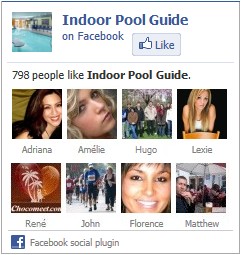
Oxidizers
You’ve been reading about oxidizers and oxidizing — and still have no idea what they are or what they do. Let’s find out.
Oxidizers work with sanitizers to rid your pool and spa water of pollutants. By definition, sanitizers kill things like algae and bacteria but they work very slowly and inefficiently when trying to remove waste products such as sweat, skin oil, shampoos, soap and urine. This is where you need separate oxidizers. Oxidizers destroy these undesirables. They do their part by breaking down the contaminant’s structure, rendering them vulnerable. The sanitizers can then attack and kill the organisms.
Some products, such as chlorine, act as both a sanitizer and an oxidizer. Bromine, on the other hand, does not oxidize very well and therefore needs the aid of a separate oxidizing chemical to properly clean your pool and spa water.
The marriage of sanitizers and oxidizers is an almost foolproof method of keeping invaders out of your pool and spa water.
Sanitizers – Alternative
Although chlorine and bromine are the most commonly used sanitizers, there are a few alternatives available to also consider. One such alternative is a chlorine generator.
Wait, we just discussed chlorine! How is this product different?
The liquid or granular chlorine most people are familiar with is added directly to pool or spa water or dispensed through a feeder or similar automated system. Chlorine generators, conversely, actually create chlorine in the pool or spa without you having to measure out any chemicals.
These generators are electrical devices that manufacture chlorine from salt added to the water. The resulting chlorine gas is then put directly into the water through the circulation system.
Chlorine generators create a residual, which can be tested with a DPD or OTO test kit. (These test kits are described in more detail in a later section.)
Another alternative sanitizing source is ozone. No, it’s not just the atmospheric layer that protects us from the sun’s harmful rays. Rather, the ozone used in pools and spas is a modified version of that gaseous oxygen.
To its advantage, ozone works quite well as a sanitizer and an oxidizer. . Because it is a form of oxygen, ozone doesn’t last long in an aqueous environment. Once it does its job of ridding the pool and spa water of bacteria and other unwanted matter, the ozone then reverts back to oxygen and either dissolves into the water or escapes into the air.
Because it cannot create a residual, an ozonator must be used in conjunction with small amounts of chlorine or bromine — how much chlorine or bromine depends on how long the ozonator is run each day.One other common kind of sanitizing equipment is an ionizer. This system introduces silver and copper into your pool or spa water through the circulation process. It works well as a sanitizer but does require the addition of an oxidizer.

